Little Dark Age - Foreign Animation These Are The Foreign Animations That Deserved Love. A Response To
Little Dark Age - Foreign animation These are the foreign animations that deserved love. A response to Oscar. Version: Vimeo GD Youtube (Extended)
Song: Little Dark Age - MGMT Inspiration: https://www.youtube.com/watch?v=dae1m2Z6fQ0&t=7s https://www.youtube.com/watch?v=DwlCXVujrWE&t=28s
List of the clips (including overlays): Breadwinner Song of The Sea The Secret of Kells The Phantom Boy The Illusionist Birdboy: The Forgotten Children The Swallow of Kabul Klaus The King of Pigs The Congress Waltz with Bashir The Tragedy of Man April and The Extraordinary World Calamity, A Childhood of martha Jane Cannary The Bear’s Famous Invasion of Sicily. Flee Johnny Corncob Son of The White Mare Wolfwalker Yellow Submarine Where is Anne Frank? The Swallows of Kabul Have A Nice Day Gandahar The Time Masters Fantastic Planet The Triplet of Belleville The Rabbi’s Cat Nocturna The Cat in Paris Felidae Plague Dogs Watership Down The Prophet Chico and Rita Another Day of Life MFKZ Funan Cinderella The Cat The King and The Mockingbird I Lost My Body Kirikou and The Sorceress The Crossing Marona’s Fantastic Tales Long Way North Josep Mia and The Migoo The Summit of Gods Ernest and Celestine Eleanor’s Secret My Life as a Courgette Aya of Yop City One Night In City The Big Bad Fox and the Other Tales Ruben Brandt Collector The Painting Loving Vincent Azur and Asmar The Red Turtles Buñuel in the Labyrinth of the Turtles Crulic Allegro Non Troppo The Nose or The Conspiracy of Maverick Wrinkles My Sunny Maad Ethel and Ernest
More Posts from Aslanay-vonholle and Others









Blue and Red Symbolism in “The Prince of Egypt”
One of the cool overarching artistic themes in “The Prince of Egypt” is blue versus red. It doesn’t work 100% of the time - for instance, Zipporah’s clothing is blue, but she’s not associated with the Egyptians - but overall, blue and red have their own distinct, separate symbolism. Blue represents Egypt, while red is the color of Moses’ family, the Hebrews, and their God Elohim.
Now I’m going to quickly rush from start to end of the film and point out the major blue and red moments I’ve noticed.
The opening shot is red, while the musical theme for God is playing in the background.

The Hebrew infants are being slaughtered, and the color of the streets is amazingly red. The Egyptian guards themselves, however, are carrying blue shields - the only blue in these frames.

Jochebed, Aaron, and Miriam are all wearing red. Even the baby Moses is wrapped in a red blanket. Jochebed is also wearing blue; she’s making a choice based upon the dangers of Egyptian society.

All the Egyptians are wearing blue. Rameses II even has a blue tie around his ponytail and a blue necklace. The entire tint of this moment is basically blue… blues and purples. It’s a huge visual contrast from the baked, bloody red from which baby Moses has escaped.



Blues, blues, blues everywhere. The headdress of the Pharaoh on the statue is blue. Later, painted murals of the Pharaoh will show the same blue.
The next shot, we see Moses and Rameses as young adults. Moses is still sticking with the red theme, which cues viewers subtly that he’s out of place in Egyptian society. Moses’ horses are decorated in red, so is his chariot, and so are accents of his clothing. Rameses, meanwhile, perfect little Egyptian boy that he is, has all that in blue and aqua.

Tuya wears blue around the collars, the Pharaoh Seti’s cane is aqua blue, and the priests are wearing the same bluish accents. Rameses II is, as I mentioned before, wearing the same color. In fact, everyone in this room has the same shade of blue on except for Moses.

If we really want to go crazy overanalyzing, even the punch bowl that Moses dumps on Hotep and Huy is red.
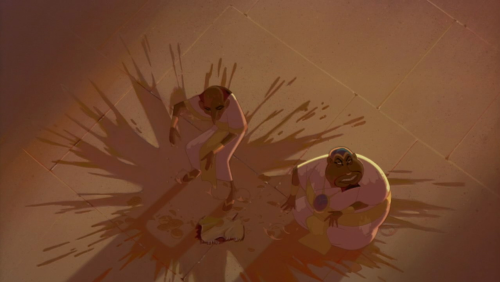
Egyptian magic is blue.

So is the ring that Rameses gives Moses. Now this ring is symbolic. While Moses wears it, he has a connection to his Egyptian family, his Egyptian brother. When he returns to Egypt to ask the Pharaoh to let the Hebrew slaves go, he returns the ring. He is revoking his kinship and connections with the Egyptians at this moment. He’s revoking the blue.

There is a deep blue tint during the night scene Moses meets Miriam and Aaron and first learns he’s actually Hebrew by birth. Moses’ mind is concerned with the fact he’s blue - an Egyptian - even though that’s not the truth. Oh, right, and all three siblings - Moses, Miriam, and Aaron - are wearing red.

While Moses struggles with the shocking news he’s actually a Hebrew, he runs into his Egyptian home. The places where he stands to comfort himself are blue, blue, blue everywhere. He wants to think that this is where he belongs - in this comforting Egyptian blue.


But then you get to Moses’ bedroom, and you realize it’s red. He’s a Hebrew at heart, deep beneath it all. He just doesn’t realize it yet.

After Moses enters Midian, Jethro gives him a red cloak.

And it is to note that Jethro, while a Midianite rather than a Hebrew, is the one who speaks to Moses about looking at life through Heaven’s eyes. This helps pave the way for Moses to become acquainted and receptive to the Hebrew God Elohim. Jethro wears red. Even the tent he lives in is red. It’s all red.
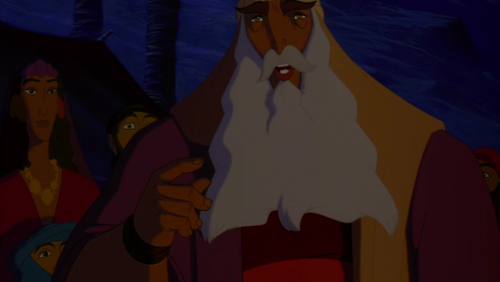
When Moses sees the burning bush, at first the atmosphere is blue. His cloak and the bush are the only things with reddish tinges on them.

The colors which wrap around him, though, are a bit more red than blue.

Excited Moses tells the news he’s going to deliver the Hebrews in a red tent.

Rameses’ royal chambers in Egypt are very blue. Moses, wearing red, sticks out from the rest of the people and things in the room.

Hey, look, more blue Egyptian magic. There is some stark red in this scene, too. Blue generally predominates, and all the time conjurations happen, it’s with blue (or greens, at least) as the main color.

The biggest exception is the fact that the Egyptians pull out red snakes. It’s almost as though to hint those snakes are going to be eaten by Moses’.

I want to point out that, of the three siblings, only Miriam wears complete red. Moses also is wearing a greenish, tealish undershirt, while Aaron’s shorts are blue-green. It’s as if to point out that Moses has to struggle through both sides, while Aaron is someone whose mind isn’t deep on faith, and gets too caught up in the worries of current Egyptian society. Miriam, the great woman of endless faith, is the one who wears the complete red associated with God.

The ideal place to relax for the Pharaoh and his son is in a rather blue boat.

Moses drowns out that blue and replaces it with the red of blood, directly with God’s power.

However, the Pharaoh has not relented. He won’t let the Hebrews go. And before the plagues begin, the Egyptian world is still overall blue in tint.

Not so much once the plagues hit and turn the whole world red.



And if you still don’t believe in the red versus blue symbolism, check out this screenshot below. Moses and Rameses II are shown facing one another in opposition. Rameses, blue. Moses, red. The two figureheads for Egypt and Israel, coming in conflict, depicting these two thematic, symbolic colors.
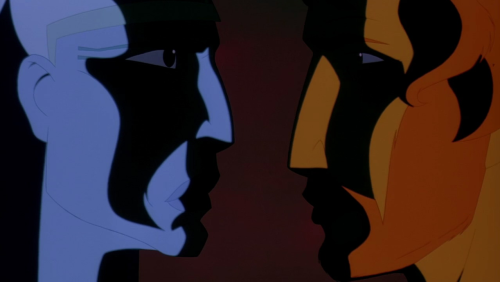

The doors are painted with the blood of lambs to protect Hebrews from the angel of death.

But there is death amongst the Egyptians, and a foreboding - depressing - blue ambience within that dark. Moses leaves Rameses II enshrouded in blue. It’s so blue you can’t even see the red on Moses’ cloak.

Rameses returns to attack the Hebrews in blue. It’s the most blue he’s ever worn, in fact.

But God returns. He comes as a pillar of flame - a bright, red, magnificent red pillar of flame. And when the Hebrews travel through the Red Sea, they light flames themselves, bringing some sparks of red into the blue passageway.

As I said before, the blue versus red symbolism isn’t perfect. There are times that it diverges, or that blue is simply blue and red is simply red. However, I think there is still a strong correlation between red associating with the Hebrews and blue with the Egyptians. The artwork is beautiful in and of itself, but the fact that the color pallet seems to be so symbolically intentional gives me a whole other level of respect for the creators of this movie.
Winter 2018 Anime Watchlist
Wow, this is almost inexcusably late Dx I’m so sorry, this should’ve gone up last week. It took me so long because I was waiting for Fate/Extra -which premiered three weeks into the season for inexplicable reasons- and then other stuff came up during the week. The good side is that it’s allowed me to get a better grasp on what these shows are doing and rank them more accordingly to my expectations rather than just the first impressions (except Fate Extra because I’ve only watched one episode -_-. Anyway, here’s the list for the Winter shows I’m watching
Dropped
Pop Team Epic: Not my kind of comedy. Honestly that’s all there is to this show, whether it’s type of comedy (or anti-comedy) works for you. It didn’t extract a single chuckle from me, so no point in watching more of it.
KOKKOKU: The premise is interesting, the interactions between the family members felt very human and realistic and the main character was pretty cool, but the look of the show is terrible and the pacing is stressfully slow. At the end of episode 2, the nephew and the brother hadn’t been rescued yet -and there seemed to be no hurry in that regard- and that just made gratuitously anxious
Sora Yori Tooi Basho: I think that this show, like Girls’ Last Tour, has a lot of potential, but I’ve been burned before and with the pacing of episode two I just had this nagging feeling that the show would manage to flounder around all season without the girls ever making it to Antarctica, which would be a bummer. So I’ll wait for the season to end, and if they do end up getting there I’ll pick it up again.
Citrus: Citrus leaves me in a complicated position because Yuzu is a very charming lead and it’s very easy to root for her, I strongly feel that I want to follow her story. But on the other hand, her love interest / stepsister (thanks Japan) is utterly unlikable, and so far every “romantic” advancement in the story is basically sexual assault. It’s odd because Yuzu herself feels realistic, but the development of the romance is immensely artificial. By the end of episode 2, Yuzu declares she’s inequivocally in love with her sister (idr her name), even though none of the events of the show to that point make her quick infatuation believable at all, considering the sister in question only insults her, dismisses her or sexually assaults her every time they interact. (Update: After episode 4 I want nothing to do with the Everyone is a Lesbian and All Lesbians are Rapists show)
Chopping Block
Basically, I’m gonna drop one or more of this shows sooner than later. I’m still not sure of which one
Darling in the FRANXX: If you thought Welcome to the Ballroom was aggressively heterosexual, DarliFra wants you to hold its beer. Episode 1 was a little iffy with its eyeroll inducing cliché meet-cute between the two leads, itsheteronormative central conceit (a man-woman pair is necessary to operate the giant robots and they take on roles named after the reproductive parts of flowers), but if that wasn’t enough for you, episode 2 is 24 minutes of cheap juvenile innuendos at least 70% of the dialogues have very obvious, very intentional double-meanings- coupled with extremely unsubtle “hyuk hyuk they are totally not in a sexual position” imagery, plus an infinite numer of ass shots (only of the girls, obviously). The whole thing reeks of sleazy, hipocritically critical of the dystopian society it depicts whilst simultaneously objectifying and sexualizing its adolescent leads with the most bottom of the barrel, lowest common denominator possible jokes and framing. Depending on how episode 3 goes I’ll either drop it or choose it as my hatewatch show of the season. (Update: Episode 3 was a mixed bag, so I guess I’ll keep watching for now)

Basilisk Ouka Ninpou Chou: We’re three episodes in and it doesn’t feel like this story is going anywhere. The production values are terrible, and the initial conceit -that Oboro and Gennosuke had time to make babies at some point during the original Basilisk series- makes literally no sense whatsoever. I’m a huge fan of the original Basilisk, but this is giving me nothing so far. Honestly the only thing keeping me around is how close the designs are to the original, basically the character designers are invoking my fondness for the original series and cheating me into believing I like this one too. Which I don’t, but for the time being I’ll hang on.

Violet Evergarden: I’m having war flashbacks to the Summer of 2017 when all the shows I was most excited about turned out to be hugely disappointing. Violet isn’t “hugely disappointing” yet but it’s very… eh. Violet herself (or, in the incredibly wise words of @shaniajurgen , “Full Metal Saber”) is just incredibly unrelatable and unoriginal as a character. I’ve seen this exact same story (emotionally stunted lead learns about human emotions) at least a dozen times, and the stories we’re seeing here so far are following the same plot beats as other stories of the ssame kind. The production itself is beautiful, but Violet feels more like a kuudere waifu than an actual character. I’m hoping it will improve and that it’ll have stories I haven’t already seen 10 times before, and that the emotional payoff is worth it

Koi wa Ameagari no you ni: This is a complicated show to talk about because the subject matter is inherently iffy -a 17 year old girl falls in love with a 45 year old man- The opening also pretty much gives away that they will in one way or another pursue a romantic relationship, so no hopes of this turning into a heartwarming parental dynamic like Amaama to Inazuma . It is important to note that writing fictional stories with fictional characters about this subject matter is not in itself problematic, but the framing of it can absolutely be malicious. Thus, if someone feels uncomfortable about it, that doesn’t make them a prude, but at the same time, enjoying the show doesn’t make you a pedophile. Bottomline is that the framing will make or break the show, and so far, it’s treading a very delicate line in that regard. On one hand, both Akira and Kondo are treated as realistic human characters; on the other, there are certain aspects of the narrative that seem to play up to the ‘nice guy’ mentality -she was throwing herself at me! I’m completely harmless!-. It’s not heavyhanded enough to be off-putting, but it does make me feel cautious about where they’re going with this. (Update: Episode 4 was definitely off-putting, enough to make me consider dropping it.)

??????
Stuff I’m watching that I’m not super passionate about I guess
Fate/Extra Last Encore: Well, this sure is a SHAFT show. Of course, Extra has a disadvantage against the other shows, having aired one episode vs the others’ 3-4, so for now I’ll keep it on a trial run. It’s bizarre and overly criptic and please don’t cut yourself on that edge son. I’m also not a fan of bringing back the original Fate cast, just replacing the original Palurdo with a different Wake ME Up INSIDE Palurdo. Apocrypha was decent because it avoided most pseudo philosophical Nasu bullshit, but they’re doubling down on that here, so that could be a problem. We’ll have to see how they handle the action scenes and whether they’re able to create compelling character dynamics
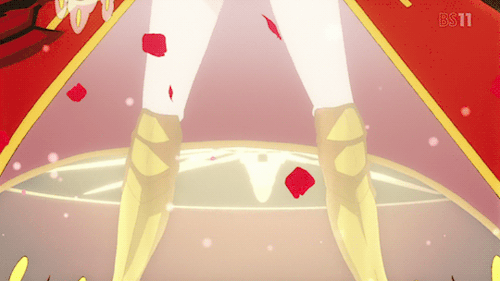
How to keep a Mummy: It’s a cute show. An aggressively cute show. Occassionally too triehard in its cuteness. If you’re into cute shows this is for you, if not, there’s really nothing to chew on. I hope we get the new monsters soon or some sort of character arc, much as I enjoy the cuteness, I do need a little bit more meat in my Chinese cartoons

Classicaloid: My feelings on Classicaloid vary wildly depending on the last episode I watched, and in this case, the latest episode wasn’t really good. I loved the part with Beethoven being blown away by the performance of the 9th, but otherwise the jokes felt like cheap potty humor. You can do much better Classicaloid

Hakumei to Mikochi: So, rather than a fantasy adventure, this is actually a fantasy slce of life. Which is fine in itself, but in a season that has a dozen feel-good slice of life stuff, it needs an extra punch to stand out. The characters are good and fun to watch and the stories are cute, the visuals have a lovely children’s book look, but there’s not much that is particularly memorable. But it’s cute and there are worse shows I’m watching, so I’ll keep it around.

Hakata Tonkotsu Ramens: This is a weird show because I slept through most of episodes 1 and 2 but the final cliffhanger of each episode made eager to keep watching. After episode 4, I’m definitely interested in seeing where they go with this premise. The dynamic between Lin and Banba is great and although the direction and production are mostly uninspired, the story seems interesting enough to grant some attention

Finally some good stuff
My favorite stuff of the season and the only thing keeping me from launching myself into the sun given how sucky my classes this semester are
GARO Vanishing Line: The plot thickens as our heroes approach the mysterious El Dorado. Now that we’ve had a Gina-centric and a Sword-centric episode the cast feels well rounded and their deynamics have evolved in a really wonderful way. I definitely love the family-like relationship they have now, with the latest episode shedding some light on how Sword may be seeing her sister in Sophie. I’m really happy with how this show has developed since its early episodes.

Yowamushi Pedal Glory Line: There’s not much I can say about Yowapeda at this point, you either like to see 3 kilometers of a bicycle race stretched into an hour of television or you don’t. I do find it interesting that Onoda seems to have fallen completely to the sidelines, hardly appearing in the first four episodes. I also wonder how long this’ll be because we’re 4 episodes in in and we haven’t been able to finish the first day of the race, even though we started like 3km off of it, so unless this is two-cour I worry we won’t see the end of the Inter High.

Seven Deadly Sins: Revival of the Commandments: I’m quite ahead of the manga for this one so there are hardly any surprises here. I think implementing the numerical power levels was very stupid and I’m not sure what Suzuki was thinking when he decided to add it but w/e. Ban is my favorite character so ‘m enjoying these first episodes centered on him. I’m mostly excited to see Escanor though! And the choreography of the Diane vs Gowther fight was superb.
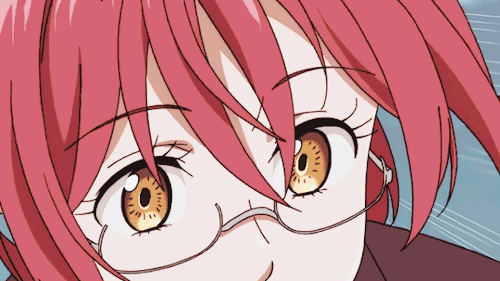
Sanrio Danshi: I must admit this show has fallen a little from my good graces in the recent episodes. Episode 2 was brilliant and it made me think maybe this show could be better written than your average toy commercial. And although it is, episodes 3 and 4 haven’t lived up to the highs established by 2. Instead of just focusing on the issues the boys face from liking Sanrio things, they’ve overcomplicated the conflicts, making them incomprehensible, and the resolutions feel rushed here’s hoping we have more episodes like 2.

Gakuen Babysitters: The surprise of the season! Although it stumbled a little in the first half of episode 3, this overall wins for the cutest show of the season, and the one with most heart. It’s struck an excellet balance showing the chiildren’s cutest and also most obnoxious sides too. The end of episode 1 in which Ryuuichi realizes he can’t call his parents for help was extremely well executed, striking at the heartstrings with a very realistic and human approach to tragedy. Also, I love Kirin and her kirin plushie. Hope we get a Kirin centric episode soon. Just delete the “pedo” character please.

Mahoutsukai no Yome: My thoughts on this show are about the same as last season, it’s a lovely story with extremely powerful moments that is occassionally brought down by weird pacing choices, like how they rushed Chise’s transformation into a fox. I do have to call the show out for the OP, it’s the laziest thing I’ve ever seen, completely made up of recycled shots from the first cour. As much as I love May’n, the song falls short to the power JUNNA’s Here had. If they weren’t gonna add anything to the OP that was relevant to the second cour they should’ve just kept the first one.
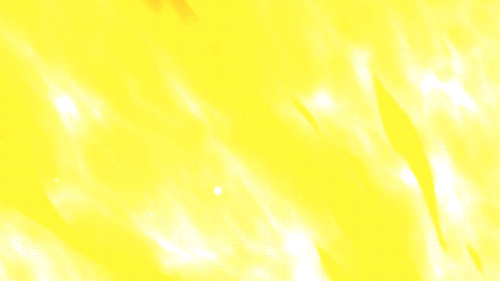
Card Captor Sakura: Clear Card: I am so happy and so relieved to see Sakura has escaped the curse of “20 year later reboot” that befell on other classics. They nailed the feel of the show to a tee, and I’m just overall so happy to get to see the characters I so love once again. I am concerned about the repetitive plot beats and about the original cards getting seemingly forgotten, but I’m confident in this team that has proved to make justice for such a beloved show.

That’s the winter season, a few standouts, a few great surprises, a lot of stuff that is just kinda there and a shitload of slice of life. What are you thinking about the season? Which are your favorite shows and which ones have you dropped so far?
![Versailles + Monsieur Philippe D'Orléans [ep1]](https://64.media.tumblr.com/12a82ca1afff74d4beb066b9beb8cbbf/tumblr_o0w7kehS031r140cso8_r2_250.gif)
![Versailles + Monsieur Philippe D'Orléans [ep1]](https://64.media.tumblr.com/69a678b54faa30f9d0b56951d18333b2/tumblr_o0w7kehS031r140cso1_r2_250.gif)
![Versailles + Monsieur Philippe D'Orléans [ep1]](https://64.media.tumblr.com/08566b045b2489d1b3ca29b82969f8cf/tumblr_o0w7kehS031r140cso3_r3_250.gif)
![Versailles + Monsieur Philippe D'Orléans [ep1]](https://64.media.tumblr.com/f3a577ef41ef49090d606961d688d05b/tumblr_o0w7kehS031r140cso4_r1_250.gif)
![Versailles + Monsieur Philippe D'Orléans [ep1]](https://64.media.tumblr.com/5754776f49e3c1a376dc991624698a56/tumblr_o0w7kehS031r140cso9_r4_250.gif)
![Versailles + Monsieur Philippe D'Orléans [ep1]](https://64.media.tumblr.com/3e5e0ded59d69ff074b2223ffe395ff0/tumblr_o0w7kehS031r140cso2_r1_250.gif)
![Versailles + Monsieur Philippe D'Orléans [ep1]](https://64.media.tumblr.com/2e64d591e75ba7a9ff92563d2ca07cd6/tumblr_o0w7kehS031r140cso5_r4_250.gif)
![Versailles + Monsieur Philippe D'Orléans [ep1]](https://64.media.tumblr.com/254fb09fb6e1870b9e7563d68c4a149e/tumblr_o0w7kehS031r140cso7_r2_250.gif)
Versailles + Monsieur Philippe d'Orléans [ep1]
Which Juliette binoche films would you reccomend ?
ugh, pretty much her entire filmography is on spot but here we go: I first saw her in the unbearable lightness of being (1988); she’s exceptional in it, pure Juliette, pure brilliance, she made a perfect Teresa. I love the work of Philip Kaufman, I think he can never go wrong – I’d definitely recommend the film whether you’re familiar w Kundera’s novel or not. then i’d go with les enfants du siècle (1999) for it’s a period drama & it’s terribly underrated; again, her portrayal of George Sand is extraordinary to say the least & it spoke volumes about her potential as an actress. chocolat (2000) is another favourite of mine; it supremely just does it on all levels for me–makes me feel nostalgic over & over again. it’s lovely, lovely & she was so exquisite in it. however, when it comes to her best performances: trois couleurs: bleu (1993) directed by kieslowki is sublime; best film out of the entire trilogy plus it just shows that Juliette clicked so much w her head director–I believe he brought out the best in her acting & what they achieved together is transcending aka this one’s poetry in motion, you can’t miss it, it’s moving and 100% raw. les amants du pont-neuf (1991) is nice; I was first introduced to the work of Carax w that one and although I came to love mauvais sang (1986) a lot more, still, this is good work and Juliette is kind of beating herself in her own game acting wise. top favourite of mine is also copie conforme (2010); it’s subtle, it’s Cannes at its best & it’s a tricky film; requires a lot of patience but communicates its images so efficiently. elles (2011) is my guilty pleasure, I won’t expand on it but I was head over heels when I first saw it so yeah…and words and pictures (2013) – ahh so, so, amazing…she co-stars w Clive Owen and the thing works because it’s just not overdone, it’s very American at the core of it but it still works Idk. 1.000 times goodnight (2013) – I’d recommend it any day for the cinematography is glorious and number one is camille claudel 1915 (2013) – to this day I haven’t seen a biography film which spoke more to my heart. wholly and unequivocably. I still can’t get my head around how superb it is and how majestic Juliette is in it.




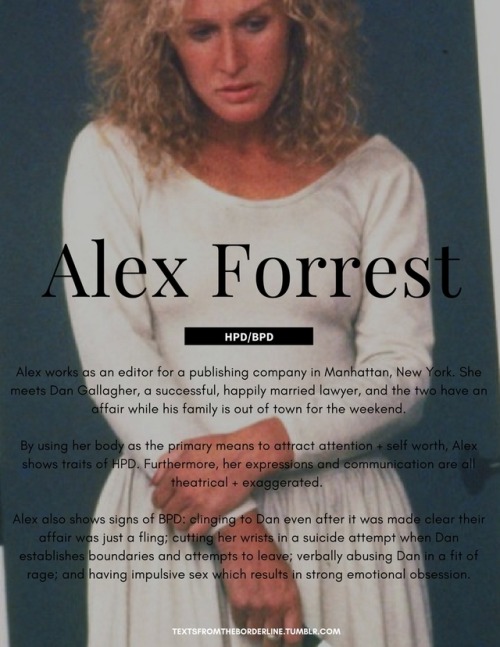




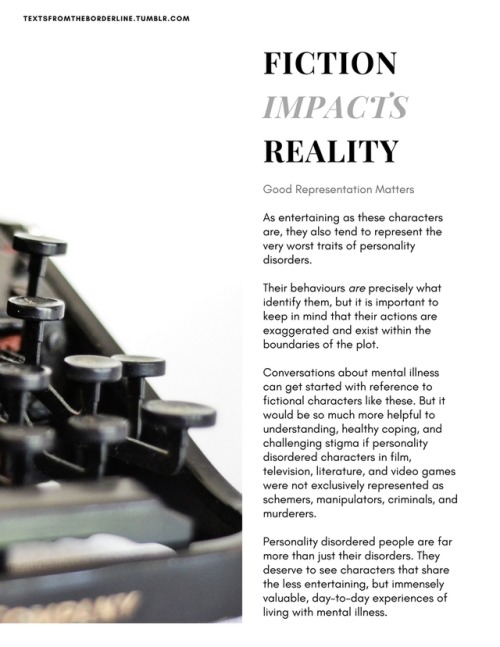
What would you recommend to someone who is just starting to watch horror movies?
Oh hell, yeah!! I love giving recs and I LOVE when people start getting interested in horror. I’ll give you recs in a few different categories so that you don’t watch anything you wouldn’t enjoy:
Early Horror Movies (Most Are Black and White, 1900′s-1950′s):
Nosferatu (1922) (silent film)
Cat People (1942)
Freaks (1932)
White Zombie (1932)
The Man who Laughs (1928)
M (1931)
Rear Window (1954)
The Cabinet of Dr. Caligari (1920) (silent film)
Metropolis (1927) (silent film)
Frankenstein (1931)
The Wolf Man (1941)
Dracula (1931)
Bride of Frankenstein (1935)
Dead of Night (1945)
The Incredible Shrinking Man (1957)
Strangers on a Train (1951)
Personal Favorites From the 1960′s (Suspenseful):
Eyes Without a Face (1960)
Rosemary’s Baby (1968)
Night of the Living Dead (1968)
Psycho (1960)
The Birds (1963)
Must-Sees of the 70′s (The Beginning of the Golden Era):
Carrie (1976)
The Exorcist (1973)
Suspiria (1977)
Jaws (1975)
The Omen (1976)
The Texas Chainsaw Massacre (1974)
Alien (1979)
Halloween (1978)
1980′s Cult Classics (The decade of good special-effects make up):
Re-Animator (1985)
The Shining (1980)
A Nightmare on Elm Street (1984)
An American Werewolf in London (1981)
The Evil Dead (1981)
The Thing (1982)
Hellraiser (1987)
Children of the Corn (1984)
Friday the 13th (1980)
The Lost Boys (1987)
Silver Bullet (1985)
Poltergeist (1982)
Horror-Comedies:
What We do in the Shadows (2014)
Shaun of the Dead (2004)
Deathgasm (2015)
Tucker and Dale vs. Evil (2010)
Zombieland (2009)
The Trouble With Harry (1955)
The Killer Condom (1996)
Dead Alive (1992)
Young Frankenstein (1974)
Little Shop of Horrors (1986)
The Rocky Horror Picture Show (1975)
Idle Hands (1999)
Dead Snow (2009)
Eight-Legged Freaks (2002)
American Psycho (2000)
The Faculty (1998)
Drag Me to Hell (2009)
Slither (2006)
Best of 2000′s-now:
The Loved Ones (2009)
Battle Royale (2000)
Trick R Treat (2007)
American Mary (2012)
The Babadook (2014)
Let the Right One in (2008)
Ginger Snaps (2000)
Martyrs (2008) (very gory, New French Extremity film)
The Hole (2001)
The Eyes of My Mother (2016)
Funny Games (2007)
The Descent (2005)
Excision (2012)
A Girl Walks Home Alone at Night (2014)
Inside (2007) (very gory, New French Extremity film)
High Tension (2003) (very gory, New French Extremity film)
Other Favorites (AKA 90′s horror):
La Ceremonie (1995)
Scream (1996)
Nightbreed (1990)
Jacob’s Ladder (1990)
The Sixth Sense (1999)
The Blair Witch Project (1999)
Audition (1999)
One day, I'm gonna travel the word doing concerts, visiting your country. You're gonna hear my music from your local radio station
Save this post.




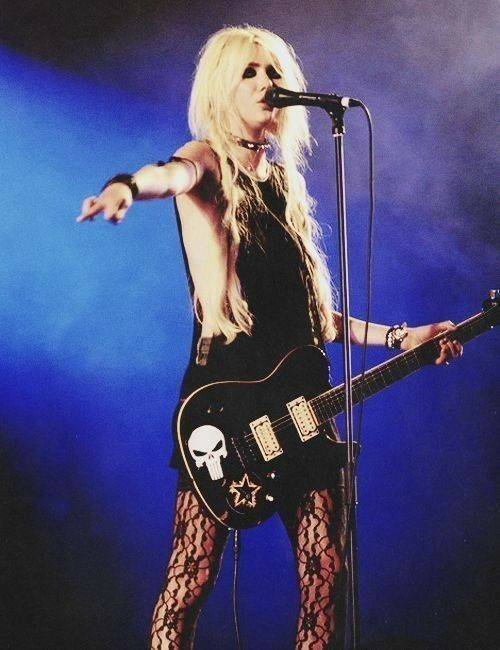





Detail of Shirin, Queen of the Sassanian Empire, bathing. The hooves of the horse of King Khosrow can be seen at the top right. From the Kashmir Manuscript, 1791.
Shirin was the wife of Khosrow II, the shahanshah, or King of Kings, of the Sassanian (Persian) Empire. Her exact cultural/ethnic origins are debated; some sources say she was Roman (at her time that was the Byzantine Empire who considered themselves Roman) and others say she was Aramean, a non-Persian from the areas of Assyria and Babylonia.
What is known is that she was a Christian and Khosrow was Zoroastrian and that such a relationship was considered forbidden. Through all the turmoil in their lives, Shirin and Khosrow remained together. During that time she was able to gain support for the Christian minority in the empire.
Her and Khosrow’s lives and romance are retold, with fictional elements, in the Persian epic poem Shahnameh, the romance Khosrow and Shirin by the famed poet Nizami Ganjavi, and even in One Thousand and One Nights.
~Hasmonean





(ENG) Intensive learning of the cyanotype process with @vera_eikona and @annelou.buzot these last days. Thank you 🤩! I’m so much happy and enthusiastic about this technique straight out of the 19th century. I was able to experience it on two of my photos. There is no doubt about it, it’s an other charm than a digital print! Silhouette lost in the night 🌙 Now I will need a lot of perseverance to assimilate all this knowledge and continue this learning… What do you think? . . (FR) Apprentissage intensif du procédé cyanotype auprès de @vera_eikona et de @annelou.buzot ces derniers jours. Un grand merci 🤩 ! Je suis tellement contente et enthousiasmée par cette technique tout droit sortie du 19ème siècle ! J'ai pu l'expérimenter sur deux de mes photos. Il n'y a pas à dire, c'est un tout autre charme qu'un tirage numérique ! Silhouette de nuit perdue. Maintenant il va me falloir beaucoup de persévérance pour assimiler toutes ces connaissances et pour suivre cet apprentissage… Vous en pensez quoi ?
-
 maniakmonkey liked this · 1 month ago
maniakmonkey liked this · 1 month ago -
 jaywhangmakes liked this · 1 month ago
jaywhangmakes liked this · 1 month ago -
 fetadae liked this · 1 month ago
fetadae liked this · 1 month ago -
 dutifullyenchantingphilosopher liked this · 2 months ago
dutifullyenchantingphilosopher liked this · 2 months ago -
 luguangs liked this · 2 months ago
luguangs liked this · 2 months ago -
 mylifeisnew liked this · 2 months ago
mylifeisnew liked this · 2 months ago -
 okudzaki liked this · 2 months ago
okudzaki liked this · 2 months ago -
 forestimaster liked this · 3 months ago
forestimaster liked this · 3 months ago -
 introverted-cupcake-x liked this · 3 months ago
introverted-cupcake-x liked this · 3 months ago -
 goldengoatgood liked this · 3 months ago
goldengoatgood liked this · 3 months ago -
 miss-moradas-art liked this · 3 months ago
miss-moradas-art liked this · 3 months ago -
 storminormins liked this · 3 months ago
storminormins liked this · 3 months ago -
 spindlly liked this · 3 months ago
spindlly liked this · 3 months ago -
 lucy300 reblogged this · 3 months ago
lucy300 reblogged this · 3 months ago -
 lucy300 liked this · 3 months ago
lucy300 liked this · 3 months ago -
 kosiersaltedkrob liked this · 3 months ago
kosiersaltedkrob liked this · 3 months ago -
 writerwithoutsound liked this · 4 months ago
writerwithoutsound liked this · 4 months ago -
 thetravlingolm liked this · 4 months ago
thetravlingolm liked this · 4 months ago -
 brainstorms-briefcase liked this · 4 months ago
brainstorms-briefcase liked this · 4 months ago -
 inflictingmisery liked this · 4 months ago
inflictingmisery liked this · 4 months ago -
 kikithefox231 liked this · 4 months ago
kikithefox231 liked this · 4 months ago -
 himboboromir liked this · 5 months ago
himboboromir liked this · 5 months ago -
 fuzzypatrolfancowboy liked this · 5 months ago
fuzzypatrolfancowboy liked this · 5 months ago -
 bumbumbumdidididibumbum liked this · 5 months ago
bumbumbumdidididibumbum liked this · 5 months ago -
 zestfestlest liked this · 5 months ago
zestfestlest liked this · 5 months ago -
 ashestoashesfunktofunky reblogged this · 5 months ago
ashestoashesfunktofunky reblogged this · 5 months ago -
 ashestoashesfunktofunky liked this · 5 months ago
ashestoashesfunktofunky liked this · 5 months ago -
 lil-buttwad liked this · 5 months ago
lil-buttwad liked this · 5 months ago -
 s0upforme reblogged this · 5 months ago
s0upforme reblogged this · 5 months ago -
 s0upforme liked this · 5 months ago
s0upforme liked this · 5 months ago -
 ashestoashesfunktofunky reblogged this · 5 months ago
ashestoashesfunktofunky reblogged this · 5 months ago -
 empty-account liked this · 5 months ago
empty-account liked this · 5 months ago -
 ladyofalabyrinth liked this · 6 months ago
ladyofalabyrinth liked this · 6 months ago -
 loserstripes liked this · 6 months ago
loserstripes liked this · 6 months ago -
 artsywriter25 liked this · 6 months ago
artsywriter25 liked this · 6 months ago -
 martydoes liked this · 6 months ago
martydoes liked this · 6 months ago -
 fandomlurker liked this · 6 months ago
fandomlurker liked this · 6 months ago -
 akanague reblogged this · 6 months ago
akanague reblogged this · 6 months ago -
 akanague liked this · 6 months ago
akanague liked this · 6 months ago -
 shuunthenonbeliever reblogged this · 6 months ago
shuunthenonbeliever reblogged this · 6 months ago -
 neko-chan-13 reblogged this · 6 months ago
neko-chan-13 reblogged this · 6 months ago -
 writerwithoutsound reblogged this · 6 months ago
writerwithoutsound reblogged this · 6 months ago -
 gender-antichrist liked this · 7 months ago
gender-antichrist liked this · 7 months ago -
 augment-techs reblogged this · 7 months ago
augment-techs reblogged this · 7 months ago -
 augment-techs liked this · 7 months ago
augment-techs liked this · 7 months ago -
 sylvie-wants-your-dogs reblogged this · 7 months ago
sylvie-wants-your-dogs reblogged this · 7 months ago -
 shinshu liked this · 7 months ago
shinshu liked this · 7 months ago -
 ladydaenys liked this · 7 months ago
ladydaenys liked this · 7 months ago